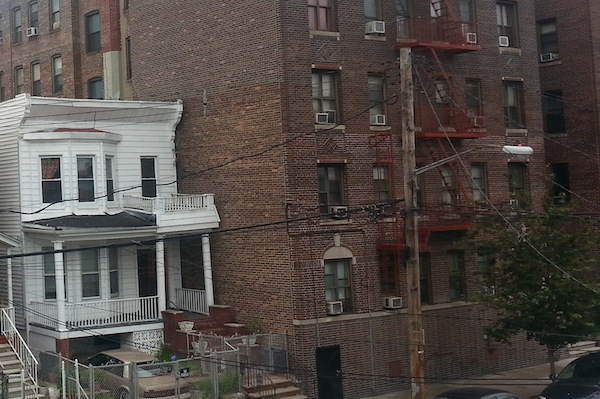
Photo by: Jarrett Murphy
Last week, Mayor de Blasio released an affordable housing plan that seeks, through a variety of subsidies, incentives and mandates, to create or preserve 200,000 units of affordable housing over the next ten years. In a published report, the administration recounted how skyrocketing housing costs, combined with the deregulation of thousands of formerly rent-regulated apartments each year, have imperiled lower- and middle-income communities throughout New York City. Of course, the creation and preservation of affordable housing units will be a critical step towards addressing an imbalanced market that has been skewed by unusually high demand.
But for renters, who make up the vast majority of the city’s residents, the exorbitant cost of living in New York is largely attributable to an imbalanced and arbitrary property tax system that favors homeowners by imposing an outsized share of the city’s tax levy on large rental apartment buildings and their tenants.
In New York City, and in neighboring Nassau County, real estate properties are divided into separate categories for property tax assessment purposes, subjecting larger apartment buildings to a much more aggressive assessment formula than is applied to one-, two- and three-family homes. Owners of condominiums and co-ops also benefit from a variety of property tax caps which have further limited homeowners’ collective share of the city’s property taxes.
Since then, while housing prices have soared among all classes of residential properties, larger apartment buildings have continued to assume a larger and larger share of the property tax burden.
The aggregate effects are staggering. While smaller residential properties comprise almost 48 percent of the city’s market value, they are assessed only 15 percent of its property taxes. Larger apartment buildings, on the other hand, comprise just over 23 percent of the city’s market share and pay 37 percent of its property taxes (the remainder is largely paid by commercial, industrial, and utility properties).
The costs of these tax inequalities are ultimately borne by renters. Approximately one-third of all New Yorkers’ rent payments are comprised of property tax costs that have been passed along by the owners of large apartment buildings. In a 2006 report, the New York City Independent Budget Office found that, under an equitable assessment scheme, an average rental apartment in a large residential building would save at least $1,200 in property taxes each year as compared to the current lopsided system.
In February, a class action lawsuit challenging the existing property tax valuation discrepancies was filed in state court. The suit claims that the inequalities perpetuated by the current assessment laws represent a form of disparate impact discrimination affecting New York City’s black and Latino residents, who compose a majority of the city’s renters and a minority of its homeowners.
While the de Blasio administration has yet to respond to this suit, Council Speaker Melissa Mark-Viverito has proposed the appointment of a commission to recommend changes to the city’s property tax structure, and in announcing the appointment of Jacques Jiha as the city’s new Commissioner of Finance, Mayor de Blasio and Jiha each noted their concern with existing assessment methods.
Economic inequality is not only a product of stagnating wages and slow economic growth, and New York City’s affordable housing crisis is about more than a simple mismatch between supply and demand. Property tax policy affects every single city resident, and the current assessment laws comprise an appallingly regressive taxation scheme.
By enshrining financial rewards for those who can afford to purchase their own homes into law, the current property tax structure simultaneously punishes the many New Yorkers who—whether by economic necessity or by choice—rent, thus exacerbating the city’s affordable housing crisis while also amplifying its pernicious wealth inequalities.
While the de Blasio administration’s work to encourage the development and preservation of affordable units should be celebrated, any efforts to reduce inequality and alleviate the financial strains of New York’s renters must also include a fundamental restructuring of our unequal and illogical property tax system.









